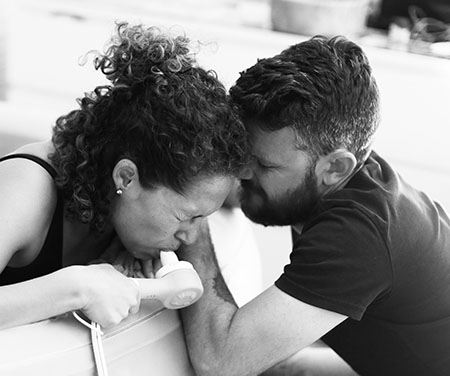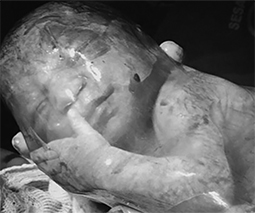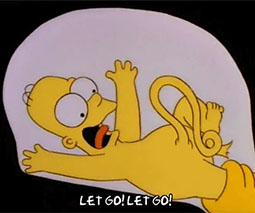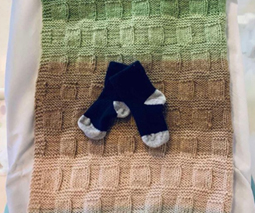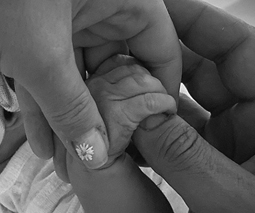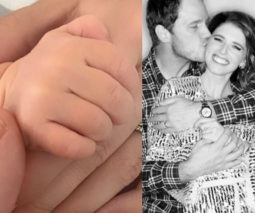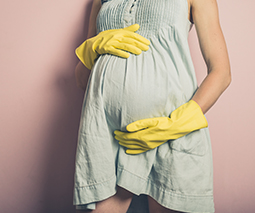An elective caesarean – what it is, why you might have one and what to expect
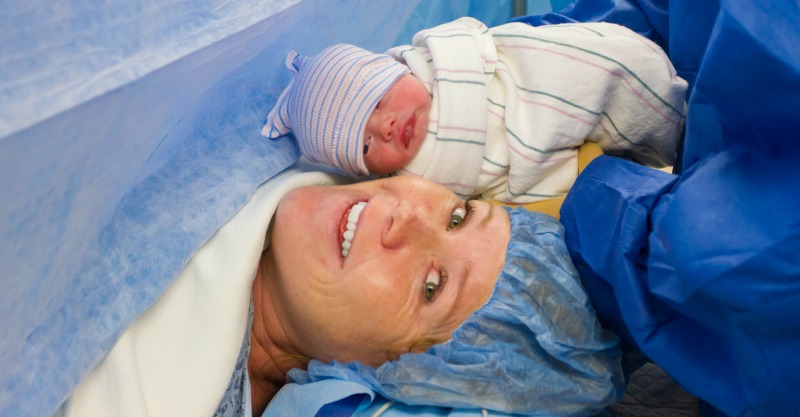
I’ve had an elective caesarean, so does it mean I was ‘too posh to push’? Hell no. Been there, done that, and would have gone again if my health hadn’t been at risk. Here’s what a planned caesarean is really all about and why you might need one too.
Hail, Caesar!
Around a third of all women in Australia now give birth via caesareans (also known as a c-section) and roughly 60% of these are planned. The most common major surgery for women, it’s when an obstetrician cuts your abdomen and uterus open to remove your baby rather than you giving birth the traditional way (i.e. through your vagina).
Elective caesareans… or not
An elective, or planned caesarean is just what it sounds – you know in advance that you’ll be giving birth via a caesarean and have booked in the date with your doctor or hospital (which will be a week or so before your due date). A lot calmer than an emergency procedure (something I’ve also had, which is required when the mum or baby’s health is at risk during pregnancy or labour), there is a lot more time to prepare mentally and physically with an elective caesarean and so the recovery is also a lot better.
The trouble with the term ‘elective’ is that it usually conjures up thoughts of the mother simply opting for a quick and easy delivery method that she can put in the diary and organise her life around. But hang on, we’re talking about MAJOR surgery here and there is nothing easy about that. The thing is, in many cases women don’t actually choose to have planned caesareans – I know I certainly didn’t.
When you might need a planned caesarean
Of course there are obstetricians who will let women book in for a caesarean when there is no legitimate medical reason for it (after all it means they don’t have to get up in the night when your waters break), but usually they’re only recommended when your doctor feels it’s necessary to ensure the safety of yourself and your baby.
Even though you may not want a caesarean or like the idea of it, sometimes you don’t have a choice in the matter. Some common reasons why you might need an elective caesarean include:
- Your baby is in an abnormal position – such as breech, meaning vaginal birth will be much more difficult
- You’re carrying multiple babies – often twins and triplets need to be born early because of health concerns or complications
- Your placenta is covering the cervix
- You have a health problem – such as high blood pressure, a heart condition, an illness such as cancer, or a serious infection that could be passed to your baby during vaginal birth
- Your uterus is at risk of rupturing during labour (this was the case for me)
- You or your baby have other medical issues – for example fibroids (growths) in your uterus, or your baby has extra fluid on the brain
- You have a mental illness – such as extreme anxiety or an eating disorder like anorexia nervosa
- You’ve had previous babies via caesarean – although you can still give birth vaginally after a caesarean (called a VBAC, which again I’ve also had), doctors will often recommend surgery again to minimise the risk of any complications with your wound area, especially if your children are born close together
- You’re an older mother (particularly if you’re in your mid to late 40s)

What to expect
Even though an elective caesarean is great in terms of preparation and planning, it can still be incredibly nerve wracking and distressing for those who haven’t actively opted for it. For some the thought of being cut open is terrifying, or you might be afraid of needles, or perhaps you’re just upset that you’re not giving birth the way you planned.
The important thing to remember is that if your doctor has advised a caesarean, then it’s going to be the safest way for your baby to enter the world which is the aim of the game. Here’s a quick rundown of what you can expect from the operation:
- Your doctor will book in a date and the hospital will confirm the time the day prior
- Once at the hospital you’ll get changed into a hospital gown and remove all your jewellery (or tape rings down), make-up or nail polish, glasses and contact lenses
- Your partner (or family members or friends) can be there during the operation and will need to wear a mask, hat, theatre clothes and shoe covers
- You’ll be wheeled into theatre and placed on an operating table
- A drip will be inserted into your arm to give fluids, painkillers and other drugs
- You’ll be given anaesthetic via a spinal or epidural – which numbs the lower half of your body
- A catheter will be inserted into your bladder (as you won’t be able to use the toilet yourself)
- They’ll place curtains in front of you so you don’t see the operation taking place
- The area they’ll be cutting will be shaved
- After checking your blood pressure and other vitals, and ensuring the anaesthetic is in place, they will commence surgery
- It usually only takes about 10 minutes or so from this point until your baby is out in the world
- Unless your baby needs special care, after the cord is cut and they’re wrapped up, they’ll place your baby on your chest for bonding time
- They’ll commence stitching you back up while your birth partner looks after the baby, which only takes another 15 minutes or so
- Then it’s back to your room to continue bonding, breastfeeding and resting
The Recovery
In most cases women recover from an elective caesarean quite quickly. The key things to note are:
- You won’t be able to use your legs properly or use the toilet yourself for a day or so
- You’ll require lots of regular pain relief for your wound which will be quite tender and sore for a while
- You’ll be in hospital for a week and will need decompression socks due to your limited movement
- You should have no problems lifting, holding or breastfeeding your baby
- Once home you’ll need to take it easy for a number of weeks so no heavy lifting or exercise
- You also won’t be able to drive a car for around six weeks – but just check with your doctor who will assess how you’re progressing
- Your scar will be raised and red to begin with, but will flatten and heal over time. It’s also tiny (about the length of a finger and as wide as a pencil lead) and is below your bikini line so you can’t see it when wearing briefs.
Keep calm and caesar on
Every birth is so different and there’s no right or wrong way to bring a baby into the world. So if you are pregnant and facing an elective caesarean, try not to panic and remember that many other women have been in the same boat and come out the other side with a beautiful, healthy baby (plus that permanent little mark, which is a nice reminder about what you got in return).
How do you feel about elective caesareans? Have you had a good experience?
